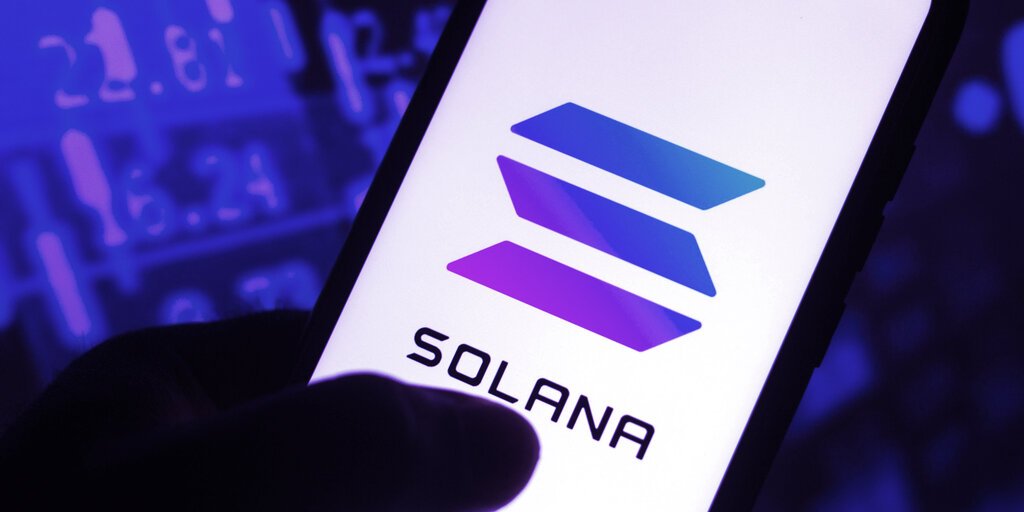Menu
Search
About
Solana is on the verge of introducing a new fee prioritization model, which is designed to help mitigate the impact of in-demand apps and services alongside other new tech upgrades. But unlike with Ethereum, Solana co-founder Anatoly Yakovenko claims, the model won’t punish users with high fees across the entire network.
Solana Labs revealed first details on the new fee implementation last month in a postmortem report, following the network crash blamed on bots (or users’ automated programs) overwhelming an NFT mint. Per the report, the new model will take a “neighborhood fees” approach that does not impact the wider network.
On Wednesday night, Yakovenko wrote a Twitter thread explaining how that new fee prioritization approach works, following the initial rollout of the v1.10.25 Solana network update. In an interview today with Decrypt, he further shared perspective on how the upgrade can help stabilize the network.
In his thead, Yakovenko used the analogy of there being “one light switch” that “everyone wants to flip at the same time.” Ultimately, the “highest bidder gets to flip the switch.” In other words, when applied to a blockchain network with validators acting in their self-interest, the person who pays the highest gas fee—the amount paid to the network—has their transaction pushed to the front of the line.
On Ethereum, such gas fees can prove to be incredibly expensive, ranging into the hundreds or even thousands of dollars—as seen in the recent Otherside virtual land drop from the makers of the Bored Ape Yacht Club. Worse yet, a single hot NFT drop or token launch can impact the entire network, making every Ethereum transaction more expensive in the process.
That’s not the case with Solana’s new model, according to Yakovenko. He wrote that each decentralized app (dapp) works as a single switch in his analogy. “A specific NFT auction, or specific Serum market, or Orca AMM pool is one switch,” he wrote. The fees are used to prioritize transactions within a certain app or protocol, not the entire network.
As a result, surging fees for one app should not have any impact on the wider Solana network. Collectors trying to snag NFTs in an in-demand mint, or launch, will see elevated fees—potentially leading to the sort of "gas wars" collectors have experienced on Ethereum—but people transacting elsewhere on the Solana network should not see any fee impact as a result.
In conversation with Decrypt today, Yakovenko explained that Solana’s architecture enables that capability because it can specify which part of the network state it’s interacting with—so it can pick certain accounts to write to. An NFT launch using Metaplex’s Candy Machine mint contract would be one account, then, among many that might be active on Solana.
Network validators will be able to add a certain number of transactions for a particular writable account in each block, as prioritized by the additional fees paid by users. But then Yakovenko said that they will have “plenty of resources to add transactions” from other accounts elsewhere on the network—without any impact on fees from a particularly in-demand app or service.
Local Fee Markets > Global Fee Markets
cc: @yaamehn https://t.co/Xf3ata6Ezm pic.twitter.com/wwyx3scTLi
— PEDR◎ 🇧🇷 (@voteforpedrito) June 16, 2022
“You should see these buckets being filled in order of highest-paid bucket,” he told Decrypt, “but then as soon as one is saturated, the rest are filled as well.”
Solana’s base transaction fee is tiny, typically a fraction of a penny worth of SOL. What users may pay under this new model is considered an additional fee, which Yakovenko said will be a user-specified rate based on compute units needed to complete the transaction’s instructions.
How much will users potentially pay an additional fees? That’s unclear for now. A Solana Labs representative said that no estimate could be provided, as it is demand-driven. Whether fees end up being “expensive” compared to Solana’s base fee or other networks remains to be seen, but demand for certain apps shouldn’t impact everyone using the network at a given time.
As mentioned, the fee prioritization model is part of the Solana mainnet beta v1.10.25 network update. But it’s not the only new technological addition, and the full set is designed to help steady the Solana network following three notable periods of downtime since last fall.
ELI5 solana fees:
Once all the features rollout, there will be fees. Does that mean the network will be expensive? No! 🧵https://t.co/vWfJxYXjiK
— T◎lyxNFT, 🇺🇸 (@aeyakovenko) June 16, 2022
Another key piece of the puzzle is QUIC, a Google-developed protocol that will replace Solana’s existing, “raw UDP” (user datagram protocol), said Yakovenko. QUIC includes flow control capabilities, “where you can force bots and senders to back off and slow down,” he added.
That’s key to keeping the network upright and working, as we saw on April 30. On that date, bots sent several million transactions per second to try to game a hot NFT launch on Solana and crowd out legitimate users. It added up to about 100 gigabits of data per second, said Yakovenko, overwhelming the validators’ devices.
“That rate was high enough to where it could overwhelm the network and stress test parts of the system that maybe have not seen that amount of traffic before,” said Yakovenko.
With QUIC, the bots are “basically throttled at the source,” he added, effectively diminishing the impact of such demanding actors. Metaplex previously implemented a so-called “bot tax” that is specific to NFT mints using its Candy Machine protocol, but QUIC’s impact should be more widely felt across the Solana network.
In addition to QUIC and the fee prioritization model, the other addition is stake-weighted quality of service, a feature that considers the amount of SOL staked (or held) within the network by any node running the Solana client. If a node holds 0.5% of the total stake, then it should be able to send at least 0.5% of data packets to the lead validator during times of congestion.
It’s another element designed to avoid overwhelming network congestion coming from bots or other malicious sources. With that model, unstaked connections will “get dropped faster than staked ones,” said Yakovenko, while connections with a network stake will be throttled to the point where they’re not blocking other staked users from participating in the network.
All told, the technological updates implemented in the v1.10.25 update are designed as a one-two-three punch to improve Solana’s network stability. Solana was most recently down for about four hours on June 1 due to a bug, following the seven-hour downtime in April and last September’s 17-hour halt due to overwhelming traffic from a DeFi token launch.
Validators are currently in the process of adopting the update, and then once 95% of the decentralized network has updated, validators can start “switching on the features,” Yakovenko said. It may require further iteration, he added, and ultimately it may be a couple weeks before users begin encountering the added fees.


